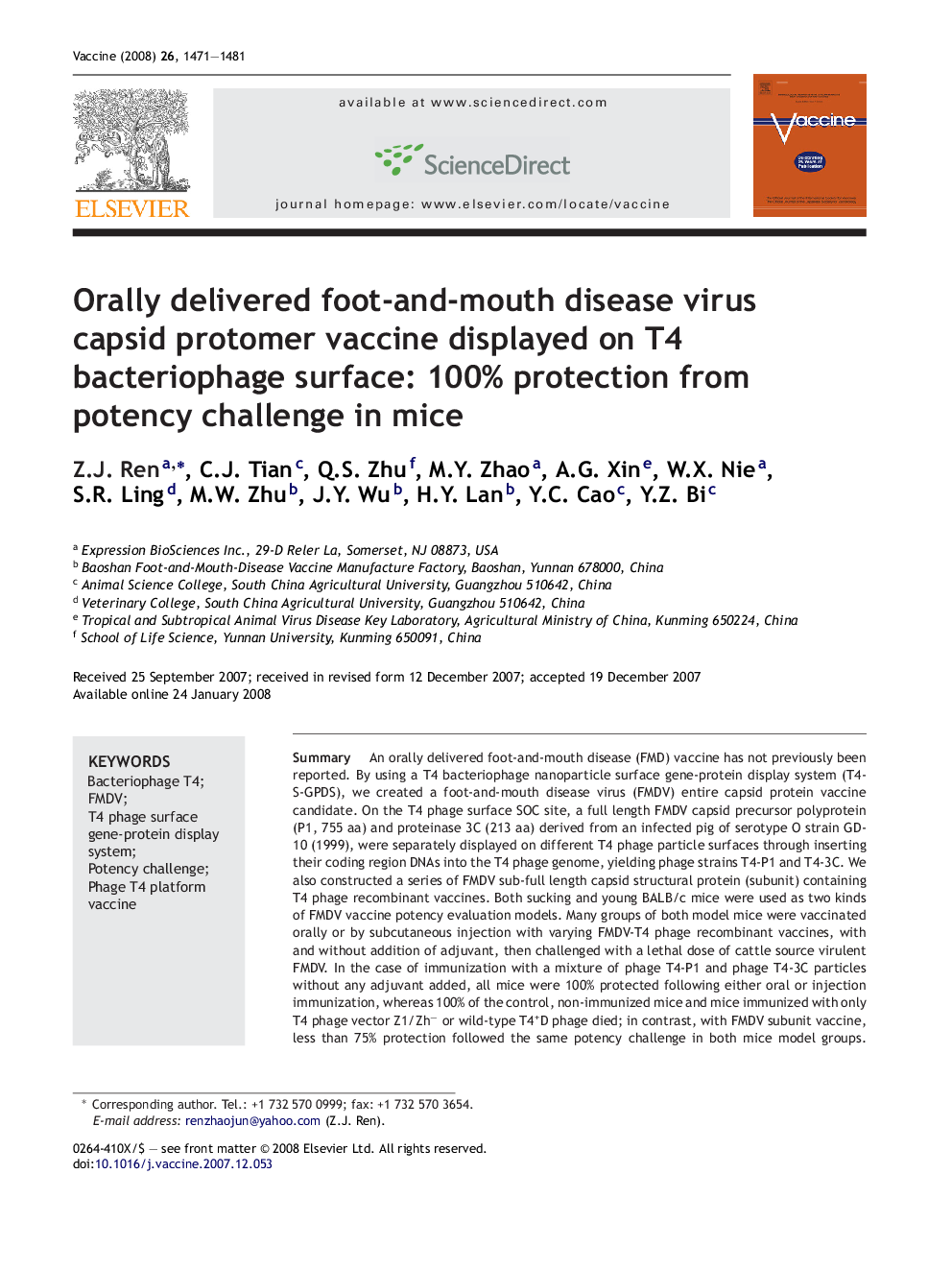| Article ID | Journal | Published Year | Pages | File Type |
|---|---|---|---|---|
| 2408365 | Vaccine | 2008 | 11 Pages |
SummaryAn orally delivered foot-and-mouth disease (FMD) vaccine has not previously been reported. By using a T4 bacteriophage nanoparticle surface gene-protein display system (T4-S-GPDS), we created a foot-and-mouth disease virus (FMDV) entire capsid protein vaccine candidate. On the T4 phage surface SOC site, a full length FMDV capsid precursor polyprotein (P1, 755 aa) and proteinase 3C (213 aa) derived from an infected pig of serotype O strain GD-10 (1999), were separately displayed on different T4 phage particle surfaces through inserting their coding region DNAs into the T4 phage genome, yielding phage strains T4-P1 and T4-3C. We also constructed a series of FMDV sub-full length capsid structural protein (subunit) containing T4 phage recombinant vaccines. Both sucking and young BALB/c mice were used as two kinds of FMDV vaccine potency evaluation models. Many groups of both model mice were vaccinated orally or by subcutaneous injection with varying FMDV-T4 phage recombinant vaccines, with and without addition of adjuvant, then challenged with a lethal dose of cattle source virulent FMDV. In the case of immunization with a mixture of phage T4-P1 and phage T4-3C particles without any adjuvant added, all mice were 100% protected following either oral or injection immunization, whereas 100% of the control, non-immunized mice and mice immunized with only T4 phage vector Z1/Zh− or wild-type T4+D phage died; in contrast, with FMDV subunit vaccine, less than 75% protection followed the same potency challenge in both mice model groups. In addition, two pigs immunized with a phage T4-P1 and phage T4-3C mix were protected upon housing together with infected pigs. This study represents a clear example of how FMD and other pathogenic disease vaccines can be prepared by a simple and efficient bacteriophage route.
